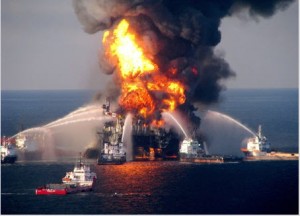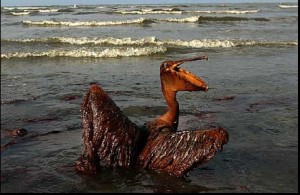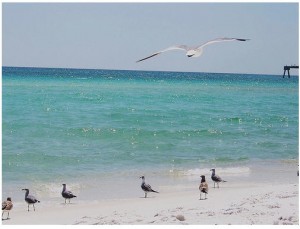 This week the media are commemorating the one-year anniversary of the BP oil spill in the Gulf of Mexico.
This week the media are commemorating the one-year anniversary of the BP oil spill in the Gulf of Mexico.
Conspicuously absent from their retrospectives, however, are the on-air rants by reporters, commentators, environmentalists, and politicians, including no less a person than President Obama, about this spill causing an ecological catastrophe that will last a thousand years.
By contrast, I published a commentary back then (on May 4) entitled Gulf oil spill: Obama’s Katrina? that I hoped would provide a more sobering perspective.
To help make my point, I quoted the following from the May 4, 2010 edition of the Wall Street Journal:
The infrequency of big spills is extraordinary considering the size of the offshore oil industry that provides Americans with affordable energy. According to the Interior Department’s most recent data, in 2002 the Outer Continental Shelf had 4,000 oil and gas facilities, 80,000 works in offshore and support activities, and 33,000 miles of pipeline. Between 1985 and 2001, these offshore facilities produced seven billion barrels of oil. The spill rate was a minuscule 0.001%.
According to the National Academy of Sciences … only 1% of discharges in North America are related to petroleum extraction. Some 62% of oil in U.S. waters is due to natural seepage from the ocean floor, putting 47 million gallons of crude oil into North American water every year.
 Alas, instead of being reassured, most readers reacted to this commentary as if I had suddenly become a flak for BP. And I probably lost a few of them by rubbing their hysteria in their faces with a follow up (on August 3) entitled BP oil everywhere, but not a drop to see.
Alas, instead of being reassured, most readers reacted to this commentary as if I had suddenly become a flak for BP. And I probably lost a few of them by rubbing their hysteria in their faces with a follow up (on August 3) entitled BP oil everywhere, but not a drop to see.
Again, to help make my point, I quoted the following assessment of the actual damage that was offered by marine scientist Ivor Van Heerden in a July 29 report by TIME magazine:
Yes, the spill killed birds – but so far, less than 1% of the birds killed by the Exxon Valdez. Yes, we’ve heard horror stories about oiled dolphins – but, so far, wildlife response teams have collected only three visibly oiled carcasses of any mammals. Yes, the spill prompted harsh restrictions on fishing and shrimping, but so far, the region’s fish and shrimp have tested clean, and the restrictions are gradually being lifted. And, yes, scientists have warned that the oil could accelerate the destruction of Louisiana’s disintegrating coastal marshes – a real slow-motion ecological calamity – but, so far, shorelines assessment teams have only found about 350 acres of oiled marshes, when Louisiana was already losing about 15,000 acres of wetlands every year.
In this same commentary, I noted further that:
Scientists are falling all over themselves to explain that much of the oil, which latest government reports say amounted to 205 million gallons, has simply evaporated (by a biodegrading process called weathering). Thank God for Mother Nature…? The rest they say was captured at the source by BP, broken up by dispersants, eaten up by microbes, or skimmed or burned by BP and Coast Guard clean-up crews.
Despite all this, there are still some die-hard Chicken Littles who insist that this unfolding narrative of the disappearing oil is just another shameless attempt by BP’s PR machine to limit its liability….
 Well, now come reports which affirm my take on this spill beyond all reasonable doubt. Specifically, the Associated Press reported yesterday, rather definitively, that:
Well, now come reports which affirm my take on this spill beyond all reasonable doubt. Specifically, the Associated Press reported yesterday, rather definitively, that:
Scientists judge the overall health of the Gulf of Mexico as nearly back to normal one year after the BP oil spill… More than three dozen scientists grade the Gulf’s big picture health a 68 on average, using a 1-to-100 scale. What’s remarkable is that that’s just a few points below the 71 the same researchers gave last summer when asked what grade they would give the ecosystem before the spill…
The survey results mirror impressions Jane Lubchenco, the head of the National Oceanic and Atmospheric Administration, gave on the health of the Gulf in an interview with the AP Thursday.
‘The Gulf is much better than people feared.’
To be fair, though, die-hard skeptics would undoubtedly argue that other scientists are still worried about the “mysterious deaths of hundreds of young dolphins and turtles, strangely stained crabs and dead patches on the sea floor.” Of course, I could argue that these scientists should be more worried about the millions of fish that were found dead in the Chesapeake Bay in January, which clearly had nothing whatsoever to do with BP.
In any case, because these scientific reports utterly belie their narrative of this spill being an environmental apocalypse, the media are now doing their damndest to hype the financial toll it has taken on the region’s fishing and tourism industries. But I have no doubt that – just like the Gulf itself – these industries will recover in due course.
Related commentaries:
Obama’s Katrina?
BP oil everywhere…